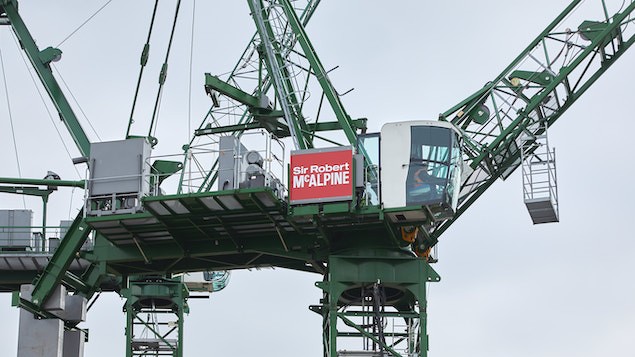[ad_1]

Even in construction, there is considerable support to keep working flexibly in the post-pandemic world
Organisations that shied away from flexible working for years suddenly shifted to an entirely remote workforce back in March, but despite reports of increased productivity not all can boast truly flexible cultures. Paul Hamer, CEO of construction company Sir Robert McAlpine, argues why this pandemic should be the impetus for UK companies to adopt flexible working more widely.
With almost no warning at all, Covid-19 forced companies across the country into the great ‘flex-periment’. Businesses of all sizes, across all sectors – from those that had long been experimenting with remote working through to those for which it remained a distant idea – suddenly found their office-based employees working from home.
But, for all the immediate, understandable concerns about disruption and the effects on productivity not to mention team morale, the nation seemed to adapt – and quickly.
Of course, there were some teething problems, particularly with IT and technology, but this was to be expected. After all, we are talking about a paradigm shift in working practices. On the whole however, the majority proved resilient in addressing these challenges and transitioning to the new conditions.
If lockdown was a test, then employers scored at least a passing grade, and many did outstandingly well.
Positive and productive
The recent Forever Flex report, based on research conducted by Claremont and commissioned by Sir Robert McAlpine and flexible working campaigner Mother Pukka, suggests that 72% of employers want to keep flexible working even after we return to ‘normal’, and 34% reported increased productivity during lockdown.
Inevitably, support for continued flexible working fluctuates between sectors but no matter the industry, attitudes are consistently positive. Even in construction – which is so reliant on close quarter, on-site working – support stands at 66%.
So, what would this ‘new normal’ look like and what challenges lie ahead? If many businesses have embraced remote working over the last few months, this was largely for urgent, public health reasons rather than as part of any long-term, progressive HR strategy.
As such, many companies are yet to implement genuine flexible working practices: in other words, going beyond government mandated-remote working and implementing deeper changes that work for everyone. Put simply, many businesses may now have adopted flexible working practices, but do they have truly flexible working cultures?
It must, of course, be acknowledged that shifting towards genuine flexible working can be a daunting task, especially in the midst of such a challenging economic climate. Yet the benefits of switching to flexible working are significant for both organisations and individuals.
Research suggests that flexible working can greatly enhance the mental health of employees through the creation of a positive work-life balance environment. In fact, the Forever Flex report found that 34% of employers recorded an increase in employee wellbeing and happiness.
Mental health benefits
We know that a happy workforce tends to be a more productive one. In reality, the importance of mental health goes far beyond that. In construction, for instance, the rate of male suicide has been an alarming industry statistic for too long.
True flexible working gives us hope that we can reverse this trend. It personally gives me a sense of responsibility to explore and implement flexible working that works in the long term.
Besides, given that we spend a huge portion of our lives at work, anything to make the working day more fulfilling for everyone can only be a good thing. We owe it to our people to promote a true flexible working environment in which they can thrive.
So, since Covid-19 has brought us to a turning point, it would clearly be a missed opportunity not to take advantage of this time of flux to implement real change. But how can businesses embrace ‘true flex’?
In the first instance, companies should not rush into implementing flexible working practices as doing so could prove detrimental to the long-term success of their strategy.
Engage and take action
They should instead adopt a cooperative approach to run pilot initiatives: trial changes in close collaboration with a single team first, before gradually implementing them across the whole company if they prove to work well.
Companies should actively engage with their employees and consult them to understand the key drivers of flexible working within their organisation and which roles will present greatest challenge.
In doing so, the changes will be embraced as managers and workers feel that they have a real stake in the process and that it reflects their true interests, rather than just yet another corporate initiative.
Furthermore, it cannot be emphasised enough how important clear communication is in this process. Managers must be given specific coaching on flexible working to ensure the optimum approach to implementation and critically to communicate clearly to their staff.
In addition, success of such a change also requires leaders to clearly set out the specifics of flexible working arrangements and ensure that staff are fully aware of their responsibilities.
Making this transition is, of course, not something that can happen immediately. However, given the agility that firms have recently demonstrated to implement remote working – although involuntarily – it seems more than feasible for the industry to build on this and shift to ‘true’ flex.
At Sir Robert McAlpine we are firmly committed to working together to explore these possibilities and make this shift work. Important first steps have been taken in the right direction and now is the time to consolidate these efforts and drive forward change that will improve mental health, productivity in the workforce and overall business results.
HR Consultant opportunities on Personnel Today
Browse more HR Consultant jobs
[ad_2]
Source link





